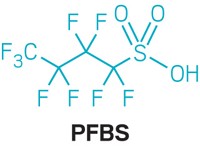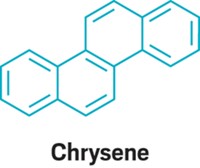Advertisement
Grab your lab coat. Let's get started
Welcome!
Welcome!
Create an account below to get 6 C&EN articles per month, receive newsletters and more - all free.
It seems this is your first time logging in online. Please enter the following information to continue.
As an ACS member you automatically get access to this site. All we need is few more details to create your reading experience.
Not you? Sign in with a different account.
Not you? Sign in with a different account.
ERROR 1
ERROR 1
ERROR 2
ERROR 2
ERROR 2
ERROR 2
ERROR 2
Password and Confirm password must match.
If you have an ACS member number, please enter it here so we can link this account to your membership. (optional)
ERROR 2
ACS values your privacy. By submitting your information, you are gaining access to C&EN and subscribing to our weekly newsletter. We use the information you provide to make your reading experience better, and we will never sell your data to third party members.
Pollution
EU adds 1,4-dioxane, fragrance chemicals, and chlorinated paraffins to list for regulation
by Cheryl Hogue
July 18, 2021
| A version of this story appeared in
Volume 99, Issue 26

1,4-dioxane, an impurity in consumer and commercial products and a widespread water contaminant, is now on the European Union’s list of chemicals that are candidates for stringent regulation. Often used as a laboratory reagent, the substance is considered a likely human carcinogen. It does not break down quickly in the environment. The European Chemicals Agency (ECHA) announced July 8 that 1,4-dioxane and a handful of other chemicals or categories of related compounds have been added to its list of “substances of very high concern.” These chemicals may pose the risk of harmful effects on human health or the environment, ECHA says. Among the newly listed substances are the synthetic lily of the valley fragrance compound butylphenyl methylpropional and its individual stereoisomers. These molecules, which are used in cosmetics, scented consumer products, and cleaning products, are toxic for reproduction, the agency says. ECHA also listed chlorinated paraffins with chains of 14–17 carbons. According to the agency, these substances, used as flame retardants and plastic additives, are very persistent and very bioaccumulative.




Join the conversation
Contact the reporter
Submit a Letter to the Editor for publication
Engage with us on Twitter